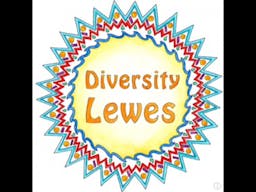The clothes on our backs: Diversifying the Curriculum
Jun 5, 2019
Story
KHANGA/MALESO
The History and uses of African textiles:
ANTHONY KALUME DIVERSITY LEWES
USIONE NIMETUA KUPANGA NI KUCHAGUA
(I'm settled because to plan is to make choices)
CULTURE AS CREATIVE TOOL Maleso
• INTRODUCTION: Swahili is a Bantu language spoken in Tanzania, Burundi, Congo (Kinshasa) Kenya, Mayotte, Mozambique, Oman, Rwanda, Somalia, South Africa, Uganda, UAE and the USA. Around 5 million people speak Swahili as a native language, and a further 135 million speak it as a second language. Swahili is an official language of Tanzania, Uganda and Kenya, and is used as a lingua franca throughout East Africa. South Africa has recently passed a law to introduce Swahili as a subject in 2020. The name Swahili comes from the Arabic word سَوَاحِل (sawāḥil), the plural of سَاحِل (sāḥil - boundary, coast) and means "coastal dwellers". The prefix ki- is attached to nouns in the noun class that includes languages, so Kiswahili means "coastal language".
Swahili includes quite a bit of vocabulary of Arabic origin as a result of contact with Arabic-speaking traders and inhabitants of the Swahili Coast - the coastal area of Kenya, Tanzania and Mozambique, and islands such as Zanzibar and Comoros. There are also words of German, Portuguese, English, Hindi and French origin in Swahili due to contact with traders, slavers and colonial officials.
The earliest known pieces of writing, in the Arabic script, in Swahili are letters dating from 1711, and the earliest known manuscript, a poetic epic entitled Utendi wa Tambuka (The History of Tambuka), dates from 1728. During the 19th century Swahili was used as the main language of administration by the European colonial powers in East Africa and under their influence the Latin alphabet was increasingly used to write it. The first Swahili newspaper, Habari ya Mwezi, was published by missionaries in 1895. Every culture/language has significant tools that are used to transmit its symbols, codes and cultural meanings which are core components of semiotics represented by a language as a main vehicle. In the Swahili language, Khanga also known as Leso is a very important tool of transmission with very rich and significant historical background as well as evolutionary transitions through several centuries to date. This work therefore seeks to capture the Khanga as a tool for stimulating creative thinking and writing at different levels of education as it promotes Swahili as a growing language with international interests. It is a continuation of ongoing talks in schools to create awareness on our culture and also stimulating creativity through the use of Khanga sayings to trigger students to write poems, plays, short stories and start a novel. This is a work in progress to enable more BME students to enter Higher Education.
The clothes on our backs – diversifying the curriculum
Lead community partner: Diversity Lewes
Researcher: Dr Jess Moriarty, University of Brighton.
A 2011 UK National Union of Students report, ‘Race for equality’ identified continuing, unresolved issues around BAME student participation within HE. Student dissatisfaction was highlighted with 42% of BAME students who took the survey stating they did not believe their curriculum reflected issues of diversity, equality and discrimination, and a third (34%) stated they felt they could not bring their views to lectures, noting that institutions often ‘did not take into account diverse backgrounds and views’ (NUS, 2011:4).
Project aims:
The University of Brighton’s strategic plan states a commitment to furthering a diverse and inclusive community. Working with community groups, the School of Humanities will work to develop pedagogy and engaging BAME people with the University which is at the heart of this project, as is raising awareness of BAME issues amongst existing students.
The project partners will devise and run three creative workshops at Brighton Museum that seek to engage members of the BAME community in Sussex, as well as University of Brighton students and staff, to work on archival material, creating poems, textiles and prose.
The workshops will focus on identity and clothing and look at the history of the Khanga, which is a sarong popular in parts of Africa (Kalume et al. 2018). These fabrics contain symbols and messages that relate to autobiographical experiences including empowering sayings and statements.
The workshops will help participants devise texts about their identity that they will then inscribe using textiles and print into garments that have significant meaning to them. The workshops will also generate material for an exhibition during Black History Month, held at The Brighton Dome and at the University's at Falmer campus. Additionally, during October, there will a presence at the Dome to talk about the project and engage the wider Brighton community.




